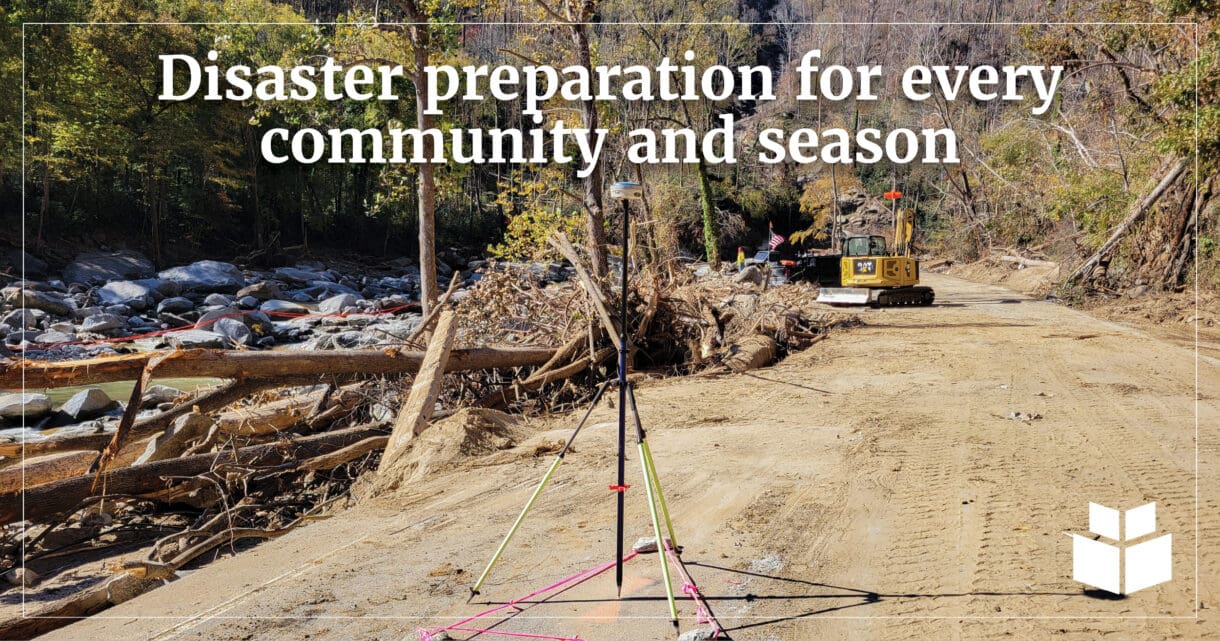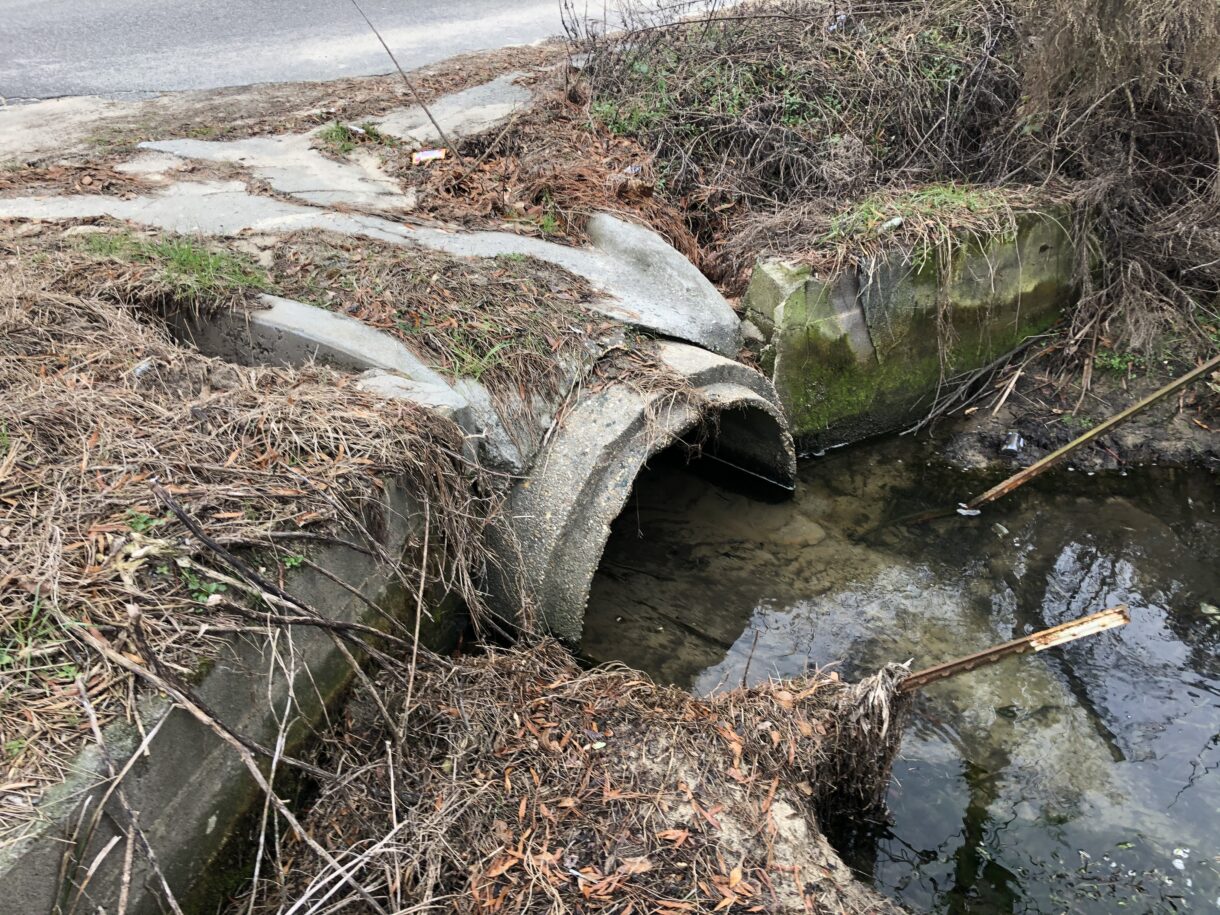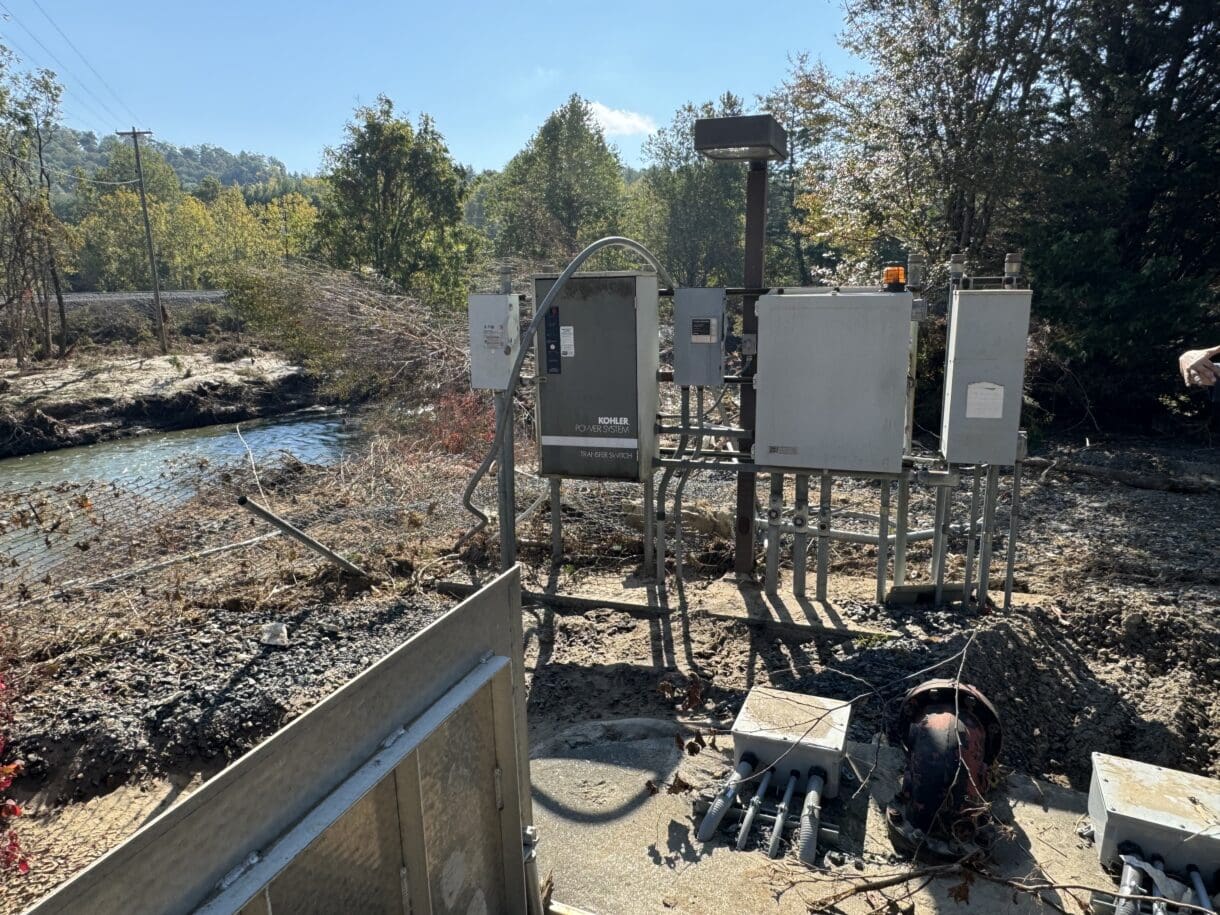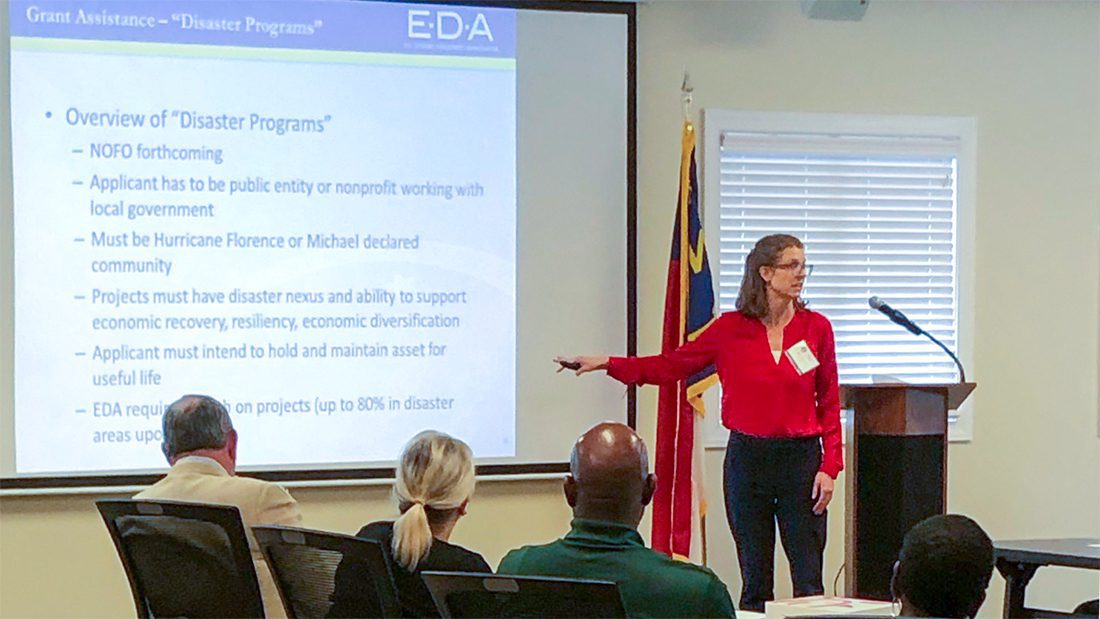
Atlantic hurricane season begins June 1. With large swaths of the Southeast still reeling from the aftermath of Hurricane Helene in September 2024, it can be daunting to face the prospect of another round of potentially devastating storms in just six weeks. But it’s not too late for communities to start preparing. David Gale, a former Emergency Management Supervisor with NC Emergency Management and a current WithersRavenel Client Experience Manager, outlines five actions to bolster local government disaster preparation efforts.
Disaster Preparation Action #1: Build partnerships and prepare agreements before a disaster strikes
When a disaster has disrupted essential services or displaced residents, who do you trust to respond effectively? Which organizations have the resources you may need? Answers will vary across communities and disaster types, but as David reminds us, “The worst time to meet someone for the first time is when you need them.”
Ideally, he recommends negotiating a disaster response and/or recovery contract with one or more firms prior to an incident. Having a contract vehicle in place makes it easier to mobilize resources, because the broad scope of work has already been approved; the procuring department only needs to authorize the specific task or duration, which may be done with as little as a phone call or email, depending on the contract.
If it is not possible to get a signed contract in place beforehand, then having a draft contract and a Request for Proposals or Request for Qualifications prepared can still reduce mobilization time significantly. The procuring department will still need to solicit the work, but they can do so without needing to wait for a legal or financial review of the documents.
Local government leaders who will be involved in the procurement process for disaster response and recovery services can get training from the UNC School of Government to ensure their initial procurements comply with state and federal standards and are eligible for reimbursement through emergency and disaster relief programs.
Knowing who to call saves time and helps to avoid decision fatigue during the already-exhausting process of handling a disaster.
Disaster Preparation Action #2: Gather and create backups of legal, financial, and operational documents
“Documentation is key for successful recovery,” stresses David. While it is enticing to imagine that the Federal Emergency Management Administration will provide relief for the financial burden of repairing or replacing disaster-damaged infrastructure, the reality is that FEMA should be considered the payee of last resort.
FEMA scrutinizes documentation carefully, and they are quick to identify when infrastructure was already damaged from a prior event or suffered from deferred maintenance. Assets that are missing work order history are assumed to be in the worst condition for their age, reducing their replacement value. Assets without sufficient documentation—especially ones that are destroyed—may be deemed nonexistent and therefore not eligible for replacement.
For this reason, local governments should verify they have copies of not only their insurance policies and purchase orders, but also as-builts plans and work order histories. They should also create backups, preferably in different formats, that are stored in different locations, to prevent the total loss of any records if one copy is damaged or destroyed.
Disaster Preparation Action #3: Conduct an annual checkup of policies and procedures
Just like people and pets, a local government’s policies and procedures benefit from an annual checkup to make sure they are healthy.
First, David recommends reviewing any policies and procedures relating to disaster response, such as emergency protocols or communication guidelines. Verify that they adequately address the range of incidents the community may face; for instance, older standards may not address cybersecurity threats or terrorist attacks. Update these procedures to include emergency response best practices as outlined in the Incident Command System and contemporary communication technologies.
Incident Command System (ICS)
The Incident Command System (ICS) is a hierarchy for organizing an emergency response that enables interagency communication and cooperation. The U.S. Department of Homeland Security mandates the use of ICS for emergency services as a condition of federal emergency preparedness funding. In North Carolina, ICS training is offered to emergency managers and first responders.
Second, David encourages officials to consider any regulations that may impact disaster recovery, including infrastructure construction/reconstruction. These might include zoning ordinances, community appearance or design standards, or the planning approval process as a whole. Evaluate whether these regulations reflect state requirements and the current desires of the community and plan to adjust accordingly. Determine whether these regulations pose any unreasonable barriers to repairing or rebuilding homes, businesses, or public spaces, and commit to exploring changes to reduce those barriers.
Disaster Preparation Action #4: Make a plan for heavy machinery and other movable assets
For communities that have a disaster response plan, actions like responding to fires and floods and handling debris removal are typically covered by the plan. Likewise, protecting buildings from damaging winds or rains are also addressed. But what about movable assets like construction equipment, trucks, and trailers?
David relates how one community he worked with had a clear plan for securing buildings before a hurricane, but they forgot to include the depot where they stored their heavy vehicles. The buildings weathered the storm, but the vehicle pool was flooded, doing significant damage. Had the community included this location in their plan, then the team who secured the buildings could have moved the vehicles to higher ground. It was a costly oversight, but it also shows an easy way that all communities can strengthen their disaster plans for practically no cost and in very little time.
Disaster Preparation Action #5: Consider the psychological side of disasters when deciding incident response structures
Comparatively few people are equipped with the specialized skills to confront a disaster head on, and even those that are can find themselves quickly overwhelmed by the volume of decisions that need to be made and the life-altering consequences of their choices. It is all too easy for earnest civil servants, community leaders, and local volunteers to get burnt out trying to solve every problem.
The ICS provides a framework for interagency coordination, but it does not address personnel management. Local governments should take care to consider how physical and mental fatigue, stress and trauma responses, and compassion fatigue can harm emergency responders and hinder their ability to serve during and after a disaster. Creating a plan to rotate staff, appropriately engage volunteers, and offer access to counseling or other emotional support services can lessen the negative psychological impact of a disaster.
Final Thoughts
No community can plan for every contingency in the event of a disaster. But each action a local government takes to foster disaster preparedness builds toward a more effective response and a faster, more comprehensive recovery.






